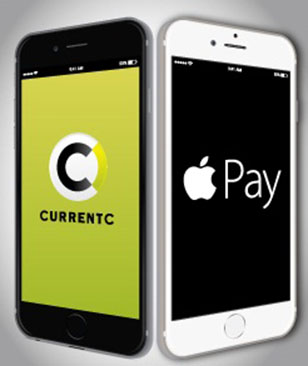Apple Pay has an arch enemy, and it's not Google Wallet.
 Offering accessible and easy payment options to customers is crucial, especially at a brick-and-mortar checkout where patrons look for a quick and efficient way to buy what they want and get on with business of their own.
Offering accessible and easy payment options to customers is crucial, especially at a brick-and-mortar checkout where patrons look for a quick and efficient way to buy what they want and get on with business of their own.
Who is CurrentC?
CurrentC, a project announced in 2012 by MCX, a Boston-based consortium of US retailers looking to create a proprietary mobile payment solution, has been slated for official release sometime in 2015, if it ever sees the light of day.
In origin, MCX’s project started with the well-meaning intention of letting retailers break free from the shackles of credit card vendor fees, by letting customers pay at checkout with a mobile app that would allow transactions directly from a bank account, rather than by using a financial institution to be the middle-man.
The big problem with CurrentC,
is MCX’s lack of foresight. CurrentC’s reliance on QR codes to function sounds like a remarkably bad choice to stick with, especially in a world where NFC is not only safer, but it’s becoming the standard to ensure a safe method of communication between payment devices at checkout.
Besides this obvious misstep, retailers are beginning to feel increasingly uncomfortable at the prospect of being in a contractual obligation by which CurrentC may be the only allowed mobile payment option.
While there is much debate on whether these allegations are accurate, there is a rumor that retailers opting to enable Apple Pay, Google Wallet, or any other NFC payment option, alongside CurrentC will incur in heavy fines.
MCX CEO Dekker Davidson has denied these claims, yet it is unclear why major retailers have gone through lengths to disable near-field communication transactions in their stores.
Regardless of the weight of these rumors, the CurrentC payment app released for iPhone and Android devices for the pilot projects, has not received many rave reviews from nearly 5000 users who have downloaded the app since its test release, and especially in the wake of the Apple Pay debut, which has reached over one million users in three days.
Reality checkout
Looking at Apple Pay and Google Wallet, it's clear that processing secure credit and debit transactions at checkout via NFC, is what customers ultimately want. Restricting NFC payments by tapping directly into a checking account may sound like a noble idea, but it is not practical, not to customers who rely on credit cards for urgent large and small purchases, like school laptops and supplies. These customers, especially at retail and discount stores, are the ones that make up for much of a retailer’s daily income.